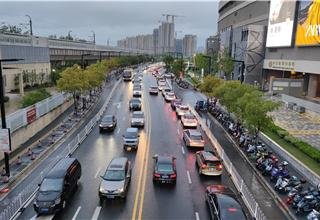The city of Shanghai has unveiled a new initiative called the “Shanghai Action Plan to Accelerate Automobile Renewal and Consumption (2024-2027)” aimed at boosting vehicle retirement and renewal in order to optimize the automotive market structure. This plan aligns with national policies to promote trade-in of consumer goods and large-scale equipment renewal.
According to the Shanghai Municipal Commission of Commerce, automotive renewal consumption is becoming increasingly important in urban automotive markets, especially in economies that have reached a certain level of development. With Shanghai’s economic growth and well-developed urban roadways, the city’s automotive market has shifted towards renewal consumption. By the end of 2023, Shanghai had over 5 million vehicles, with more than 30% of new car purchases being replacements for older vehicles. This proportion rises to over 50% for new oil-fueled vehicles. The ratio of new car sales to used car transactions has been approaching 1:1 in recent years, indicating significant potential for growth in the renewal consumption market.
The “Action Plan” has set ambitious targets to be achieved by 2027, including reducing the average age of used cars in transactions by one year, increasing the volume of used car transactions to 900,000 units (a 50% rise from 2023), doubling the export volume of used cars to 15,000 units, and doubling the volume of scrapped vehicle recycling to 50,000 units.
Several key measures have been outlined in the Action Plan, including implementing national trade-in policies, local trade-in subsidy policies, accelerating retirement of old vehicles, encouraging the development of used car dealerships, promoting trade-in services by manufacturers, and optimizing the export process for used cars.
Overall, the “Shanghai Action Plan” aims to stimulate the automotive market, promote sustainable consumption, and contribute to the optimization of the urban transportation system. With a focus on vehicle renewal and retirement, Shanghai is taking proactive steps to ensure a more efficient and environmentally friendly automotive market in the years to come.







